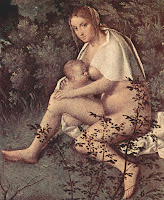Epics
2015 was the Year of Epics for me, for multiple reasons. I started out by reading 26 of them for my A to Z Blogging Challenge theme - you can read about all twenty-six of them here. In addition, I also took part in Epic Day for the first time, in February and in November, telling the opening story of the Irish Táin. Under Cathryn Fairlee's mentorship (with the help of the J. J. Reneaux Mentiorship Award from the National Storytelling Network) I developed two new storytelling performances based on the Shahnameh (Persia) and the Dietrich Cycle (Germany). As I am writing this, I am already working on my part for the next Epic Day that will feature the Tibetan Tales of the Golden Corpse.
Projects I supported
 I try to put my money where my mouth is - or, in this case, where my reading is. On Kickstarter I supported (and then read my copy of) Moonshot, an indigenous comics collection (gorgeous and much needed); The Secret Loves of Geek Girls (super fun and much needed) (no really, this should be distributed to all teen girls free of charge); and The Book of Water, a volume of Irish legends by storyteller Susan Carleton (currently in the mail). I also served as an advanced reader and reviewer for storyteller Steffani Raff's The Ravenous Gown, a collection of original stories that all have something to do with different concepts of beauty (read my review here).
I try to put my money where my mouth is - or, in this case, where my reading is. On Kickstarter I supported (and then read my copy of) Moonshot, an indigenous comics collection (gorgeous and much needed); The Secret Loves of Geek Girls (super fun and much needed) (no really, this should be distributed to all teen girls free of charge); and The Book of Water, a volume of Irish legends by storyteller Susan Carleton (currently in the mail). I also served as an advanced reader and reviewer for storyteller Steffani Raff's The Ravenous Gown, a collection of original stories that all have something to do with different concepts of beauty (read my review here).New books in good series
 A couple of sequels to series I follow have been published this year. Marissa Meyer came out with Fairest and Winter, the last two volumes in her epic sci-fi/fairy tale saga The Lunar Chronicles. They were both amazingly written, subtly re-told, full of storytelling Easter eggs, and very, very likable.
A couple of sequels to series I follow have been published this year. Marissa Meyer came out with Fairest and Winter, the last two volumes in her epic sci-fi/fairy tale saga The Lunar Chronicles. They were both amazingly written, subtly re-told, full of storytelling Easter eggs, and very, very likable.I also continued reading Bernard Cornwell's Saxon Stories series, with The Pagan Lord and The Empty Throne. Even though The Last Kingdom BBC show fell flat for me (mostly because of horrid costuming choices), the book series is still awesome.
Philippa Gregory published The Taming of the Queen, the closing book in her Tudor series, about the life of Catherine Parr. It was dark, but well written, and made a very likable character out of the woman most people only know as "the wife that survived Henry VIII."
What my friends talked me into this year
I finally got around to reading World War Z. I absolutely loved it. I am not a fan of the zombie genre, but the whole "oral history" approach was right in my wheelhouse. It was extremely well done, logical, smart, and entertaining. I wish they had made a TV show out of it instead of a movie.
A storyteller friend of mine suggested that I should read Jeanette Winterson's Sexing the Cherry, since I love adaptations of the Twelve Dancing Princesses. I did, and she was right. Apparently it is another classic that has evaded me so far, but I am happy I finally picked it up. It is quirky and lovable.
My mentor Cathryn handed me Tom O'Neill's Old Friends. It is a novel based on the Fianna legends, which made me instantly suspicious - I am very, very picky about adaptations based on my favorite stories. This was a pleasant surprise. It was more of a collection of new Fianna tales, rather than a novel - and O'Neill proved that he knows exactly what makes these heroes likable. Thumbs up. I will definitely read the sequel.
One of my favorite (and most surprising) recommendations of the year came from Hannah Givens over at Things Matter. I picked up the Sunstone graphic novel series based on the review she wrote during her A to Z blogging series. If you told me a year ago that one of my favorite reads of the year would be an erotic BDSM graphic novel series about an adorable lesbian couple... well. Waaay out of my comfort zone. But it was. Also one of the cutest. And a much better love story than most YA romances I read this year.
Talking about that...
Adventures in YA land
Every once in a while a sort of craziness seizes me and I venture into reading currently popular YA novels - either because they are based on folktales, or because they will become a movie soon. This year's experiments did not go exceedingly well. I wrote about some of them in a previous post, but here is the gist: The Wrath and the Dawn (based on Scheherazade's story) seriously hurt me in the storyteller; The Court of Thorns and Roses (based on Beauty and the Beast) was meh (although it picked up some speed at the end); Still Star-Crossed (sequel to Romeo and Juliet, soon to be a TV show) was kind of painful; the Selection ("let's see if we can re-do the Hunger Games, but with only the dressing up parts") was a painfully dull rendering of The Bachelor; Fallen was a large pile of horrible clichés... and The Sacred Lies of Minnow Bly was actually fairly well done (also the darkest). Five out of these six were built on the exact same, currently popular YA cliché - Mary Sue, love triangle, revolution of some sort. People need to stop copy-pasting the Hunger Games. Seriously.
Folktales
I left this one for last because it is part of my job as a storyteller - and also my main source of reading for entertainment. Out of the 75 volumes this year, 25 were folktale collections. I read several collections of minority folktales from China, some from Southeast Asia, and also quite a few from indigenous peoples (mostly the Saami) from Siberia and Northern Europe. But since they will soon be featured in more detail on this blog, I won't list them all here. If you are interested, you can find them listed under my Goodreads challenge here.
All in all, it was a fun year with much reading. And some Christmas books are still in the mail!
































